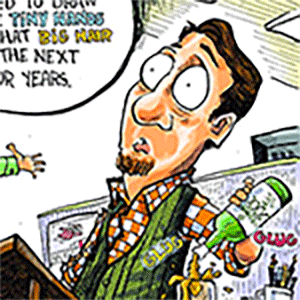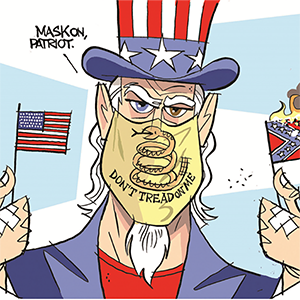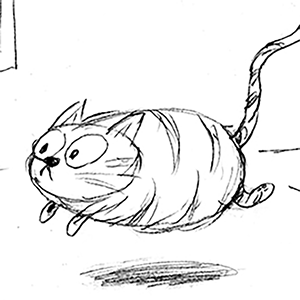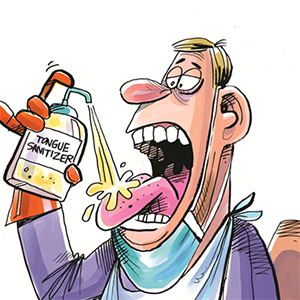A public perp walk into a Manhattan courtroom could energize – not humiliate – Donald Trump
Published in Political News
Manhattan may be the scene of the perp walk of the century on April 4, 2023, when former President Donald Trump answers to his recent indictment and turns himself in to authorities in court.
Trump has reportedly told his aides that he has no desire to hide from the cameras and is ready for a perp walk through a crowd of photographers, police and other onlookers to create a “spectacle.”
It is not yet clear how Trump will actually enter the courthouse, given security concerns that could lead to a quiet surrender. Trump’s lawyer Joe Tacopina has said that Trump will not be handcuffed when he enters the courthouse and appears before a judge.
Some of Trump’s detractors have hoped for a public moment of reckoning for alleged crimes for years, but Trump – and his supporters – are not likely to treat it as a walk of shame. Indeed, a high-profile event like a perp walk could further fuel Trump’s run for presidency.
I have studied perp walks for more than 10 years, and I am anxious to see how court officials, the New York Police Department and the Secret Service will handle Trump’s arrival at the New York courthouse on April 4.
Normally perp walks are seen as their own kind of punishment – a media ritual that puts an alleged criminal on display for all to see. But Trump is a master showman and will be the ultimate ringmaster of his indictment. I believe that he clearly wants to – and will be able to – spin the event to his favor.
As I described in my 2021 book, “Seeing Justice,” perp walks have been part of visual news for decades. But the term became common in popular culture relatively recently.
A search of The New York Times archives found it used for the first time in 1994 as part of a feature on the jargon of tabloid journalism. Since then, the term spread from the occupational lingo of police and journalists into the public sphere.
A perp walk happens when police officers bring a person arrested in a crime through a public area so he or she can be photographed by the media.
During a perp walk, defendants may be handcuffed or wearing prison clothing, accompanied by officers, or they might be photographed as they freely walk into court. Sometimes they run, and sometimes they put jackets over their heads.
In unusual cases, defendants try to trick the press to avoid being photographed. Former Pennsylvania State Attorney General Kathleen Kane had her twin sister Ellen Granahan Goffer act as a decoy and walk to court in her place after Kane was arrested on charge of perjury and obstruction of justice in 2015.
Photographers recorded Goffer walking by, and some of them were unable to recover and capture the moment when Kane herself walked by shortly thereafter.
Perp walks are often a way to shame a criminal, even though they usually occur before a person is found guilty.
For many criminals, this ritual is a moment of shame and embarrassment. In my previous career as a TV journalist, I covered quite a few walks when the person accused did everything they could to avoid the cameras. It is the scarlet letter of the digital age, which is why many of Trump’s critics on social media want one so badly they’ve been photo-editing fake ones for years.
Perp walks are productions put on by the press and law enforcement. Some result simply from a tip by police officers about where and when a person will appear. In some cases, as when Hollywood mogul Harvey Weinstein was arrested in 2018, perp walks are scheduled in advance with careful security plans for where photographers may or may not stand.
High-profile defendants are scrutinized for the way they walk, dress and face the cameras. In Weinstein’s case, for instance, his humble blue sweater made headlines.
Perp walks rarely occur spontaneously. They are usually tightly controlled and produced by the judicial system as a form of public relations for the criminal justice system. In 2000, the 2nd U.S. Circuit Court of Appeals ruled that this procedure is a legitimate way of informing the press and public of police activity. In this case, a New York doorman arrested for alleged theft of an apartment tenant’s belongings sued New York City and the police department after he was forced to do a perp walk. He said it violated his rights.
Orchestrating a perp walk for the former president, however, is not likely to satisfy the yearnings of those who want so badly to see him punished for his alleged crime.
Trump knows how to play to the camera and create his own media events. This is why he is prepared to appear in New York as a show of defiance against criminal charges stemming from his alleged hush money payment to porn actress Stormy Daniels.
In 2014, I researched the way then-Gov. Rick Perry of Texas handled his perp walk and mug shot in Travis County. Perry was charged with overstepping his powers by defunding an integrity unit.
Perry held a rally outside the courthouse before walking in and shaking hands with onlookers en route to the booking room. He then flashed an ironic smile for his mug shot. Not only did Perry not shrink from the ritual, he won the visual moment in the court of public opinion. All charges against him were eventually dismissed.
I think a politician like Trump most fears being forgotten or ignored. His opponents may want to see him humiliated, but they should keep in mind that if his first court appearance becomes a major media spectacle, he will not be embarrassed – he will be energized.
This article is republished from The Conversation, an independent nonprofit news site dedicated to sharing ideas from academic experts. If you found it interesting, you could subscribe to our weekly newsletter.
Read more:
Trump’s indictment stretches US legal system in new ways – a former prosecutor explains 4 key points to understand
Manhattan grand jury votes to indict Donald Trump, showing he, like all other presidents, is not an imperial king
Mary Angela Bock has received funding from the Association for Education in Journalism and Mass Communication and the Kapp Tau Alpha Honor Society.




































































Comments